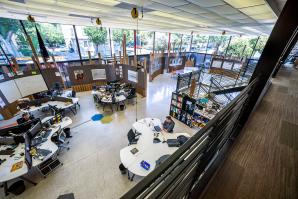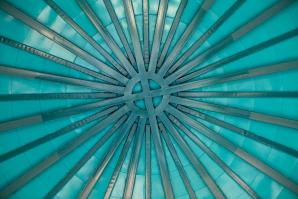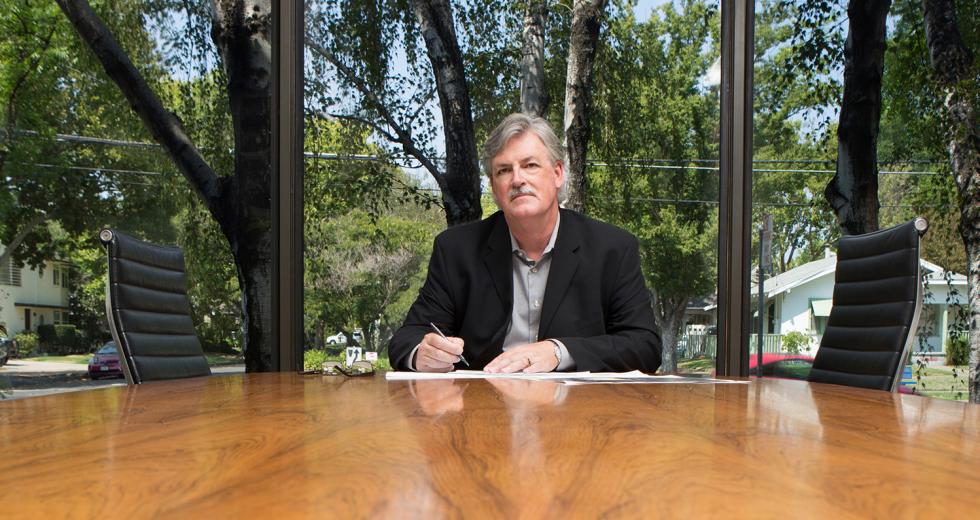Kris Barkley is the Design Director at Dreyfuss & Blackford Architects and the current president of the American Institute of Architects Central Valley Chapter. Next month, the AIACV will host Experience Architecture Week, a 10-day public outreach event with educational forums and activities throughout Sacramento.
Next month, the Central Valley Chapter of the American Institute of Architects is hosting its third architecture festival in Sacramento (Oct. 10-19). This year, you’re calling it Experience Architecture Week. What are you hoping to accomplish with the event?
The name speaks to what we’re trying to do. We understand that most people don’t know what architects actually do or how they work, and they don’t understand how the built environment affects their daily lives. We want people to explore architecture in a different light. During part of the week, there will be tours of spaces people would normally not get to visit — the tops of buildings, some unusual places and old, historic spaces that are not currently activated but that may be activated in the future. We’ll also have talks and discussions about architecture.
Biomimicry is going to be one of the topics discussed during the architectural festival. What is that concept about, and why are we talking about it in Sacramento?
It’s the study of nature and how you can apply nature’s behaviors to design. The other term is biomimetics, which refers to the science of the process — like DaVinci studying a bird’s wing in order to develop an aircraft. We have diminishing resources, so we need to be careful about how we use them. I know of no projects in Sacramento that could truly be labeled as biomimetic, but it’s certainly becoming a more integrated thought process.
Does this concept relate to human-centered design? That’s another concept festival-goers might hear about.
Some organizations are looking at the way nature interacts and are then applying those findings to the ways humans interact. It’s a concept that can be used anywhere, not just for buildings. Corporations, for example, are traditionally hierarchical, starting with the CEO at the top. But many are moving away from that to a more organic structure.
In a time of tight budgets, companies often value function over form. What is lost when aesthetics aren’t prioritized?
I always try to design with economy in mind. Understanding the budget upfront is necessary, but form isn’t necessarily tied to budget; the materials are. An efficient form affects the way people feel. It also impacts productivity. Plus, almost any business is at least partially dependent on its image, and aesthetics can be a part of that. Why not make people feel better when they’re in your environment? At the same time, aesthetics can also be counterproductive, sometimes impeding other goals like sustainability or technology, so you have to be careful.
What does the landscape look like for young architects entering the market in Sacramento and beyond? Where are the opportunities and barriers?
Its still pretty tough, but things are picking up. Firms are hiring again. An architecture education is pretty broad, so a lot of young graduates moved onto other things during the recession. But I predict we’ll be in a better place within the next couple of years. There’s going to be a lot of urban residential work because of the pent-up demand. And I think people are going to want to live smaller, so that will also be a need. And then there is a need in criminal justice. In Sacramento and outlying areas, a lot of focus has been on social spaces — breweries, restaurants. And we’re beginning to work differently as a society; we have a unique blend of generations in the workplace. So we’re seeing a lot of work figuring out how to accommodate those different generations. It’s a challenge.
What is one of the newest, most interesting trends your industry is facing?
Digital fabrication. It’s interesting. The way we can build things will be much different. It used to be that we would design something, and then another person would figure out parts and pieces and then it would go to the fabricator and then to the field, and some things would get lost in translation. We’re skipping those steps now, so there’s no room for loss. If I design [cabinets], using software I can see immediately what it will cost. If I take four inches off the width, I can see the cost change immediately, and I can see a 3-D image. Once I’m satisfied, I send the file to the digital fabricator, and what comes out is exactly what I designed. That’s becoming more common. You can even 3-D print entire buildings. It’s time consuming, but it’s entirely possible.
Sick of missing out? Sign up for our weekly newsletter highlighting our most popular content. Or take it a step further and become a print subscriber — it’s both glossy and affordable!
Recommended For You

Get Creative
Improve your business by thinking like a designer
Thomas Edison is most often credited with inventing a thing, the light bulb. But if you really take a look at what Edison did, you’ll see he was able to envision not only the technology, but also how people would use it and why they would benefit from its use. What he actually created was a product with a fully realized marketplace. Edison’s approach was an early example of a concept that has since been dubbed “design thinking” — a creative manner of problem-solving that places the user at the center of the experience.

Creative Spacing
4 factors to consider
VSP wanted The Shop in Midtown to be flexible, buildable and breakable, a learning space and a prototype in itself (form following function). With that in mind, architects put wheels on the tables and on corrugated cardboard walls to make everything portable and adaptable.

Objects of Desire
Creativity in the Capital Region is on an upswing
Among the Capital Region’s top-notch talents, some designers stand out for their ingenuity, skill and varied contributions to the fabric of local culture.



